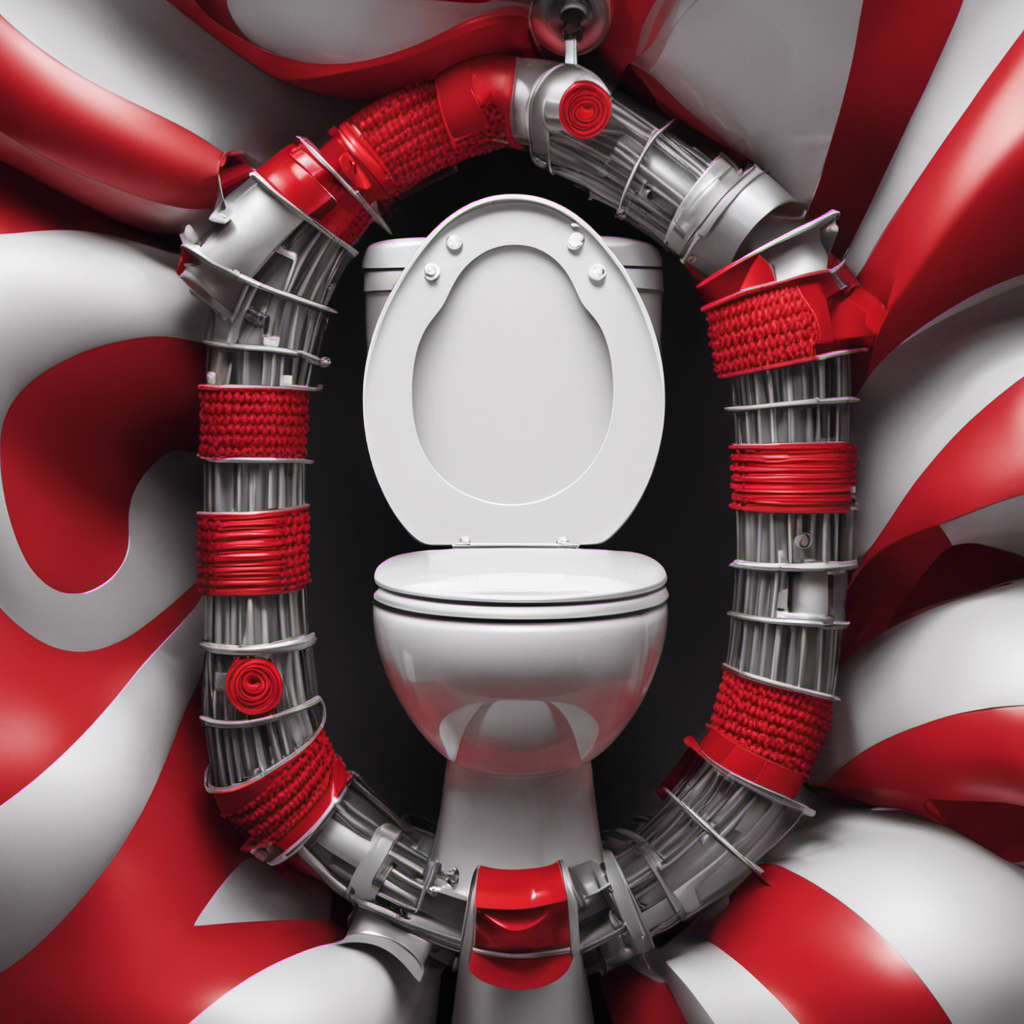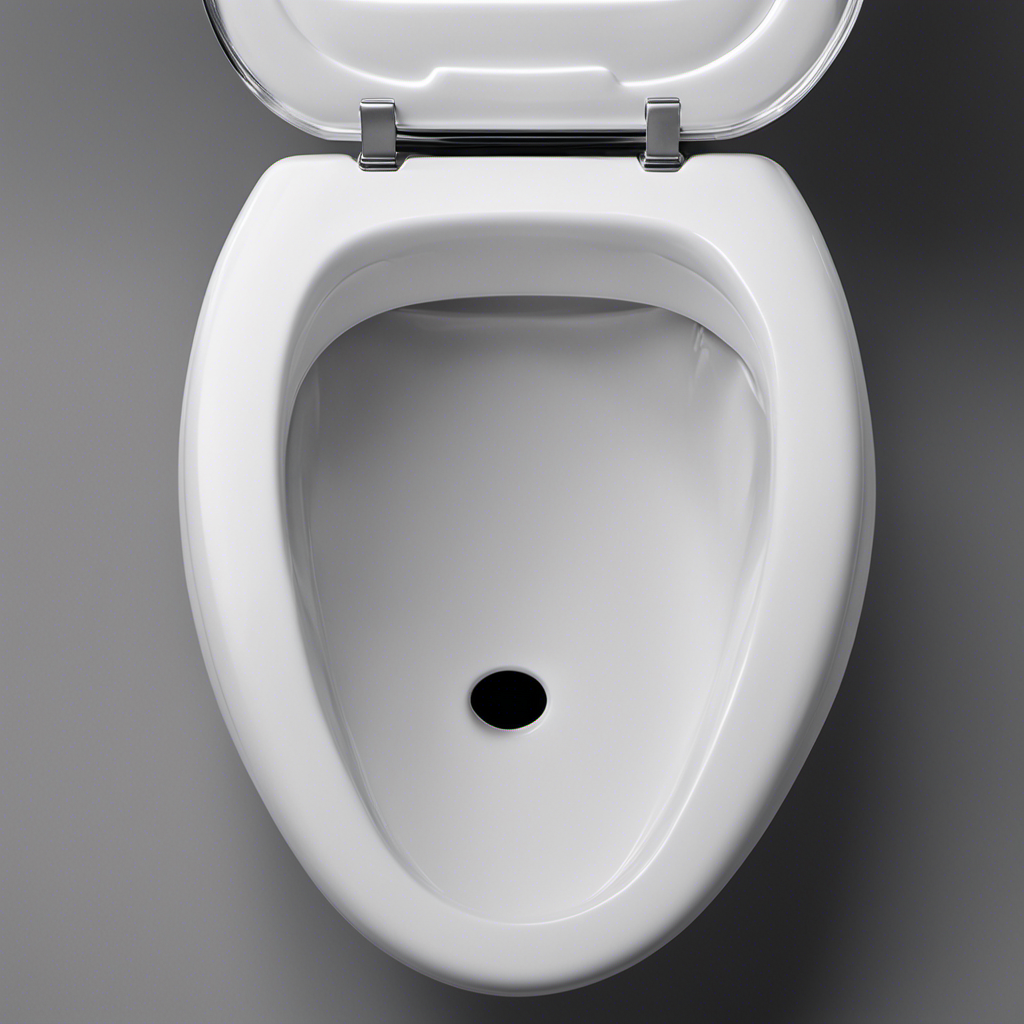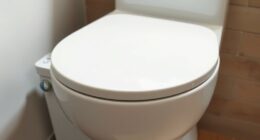As worried members of our community, we frequently question whether it’s safe to flush disinfecting wipes. In this piece, we’re going to explore what these wipes are made of, the dangers of flushing them, and how they affect both our plumbing infrastructure and the environment.
We will also explore alternatives to flushing and the role of municipal sewage treatment. Through this discussion, we aim to educate ourselves and others about proper wipe disposal, empowering us to make informed choices for a cleaner future.
Key Takeaways
- Disinfecting wipes contain chemicals that can pose health risks such as skin irritation, respiratory issues, and allergic reactions.
- Flushing wipes can clog pipes and sewer systems, leading to costly repairs and backups.
- Flushing wipes can contaminate water sources, disrupt ecosystems, harm marine life, and contribute to plastic waste and pollution.
- Proper disposal methods, such as throwing wipes in designated trash bins and educating the public, are crucial to mitigate the environmental impact and protect wastewater treatment systems.
Understanding the Composition of Disinfecting Wipes
First, let’s examine the composition of disinfecting wipes to understand what they’re made of. Disinfecting wipes typically contain a combination of chemicals, such as alcohol, quaternary ammonium compounds, and other disinfecting agents. These ingredients work together to kill or inhibit the growth of bacteria and viruses on surfaces.
However, it’s important to note that some disinfecting wipes may also contain additives, fragrances, and preservatives that can potentially pose health risks. Composition analysis of disinfecting wipes helps to identify and quantify the presence of these chemicals, ensuring that they meet safety standards.
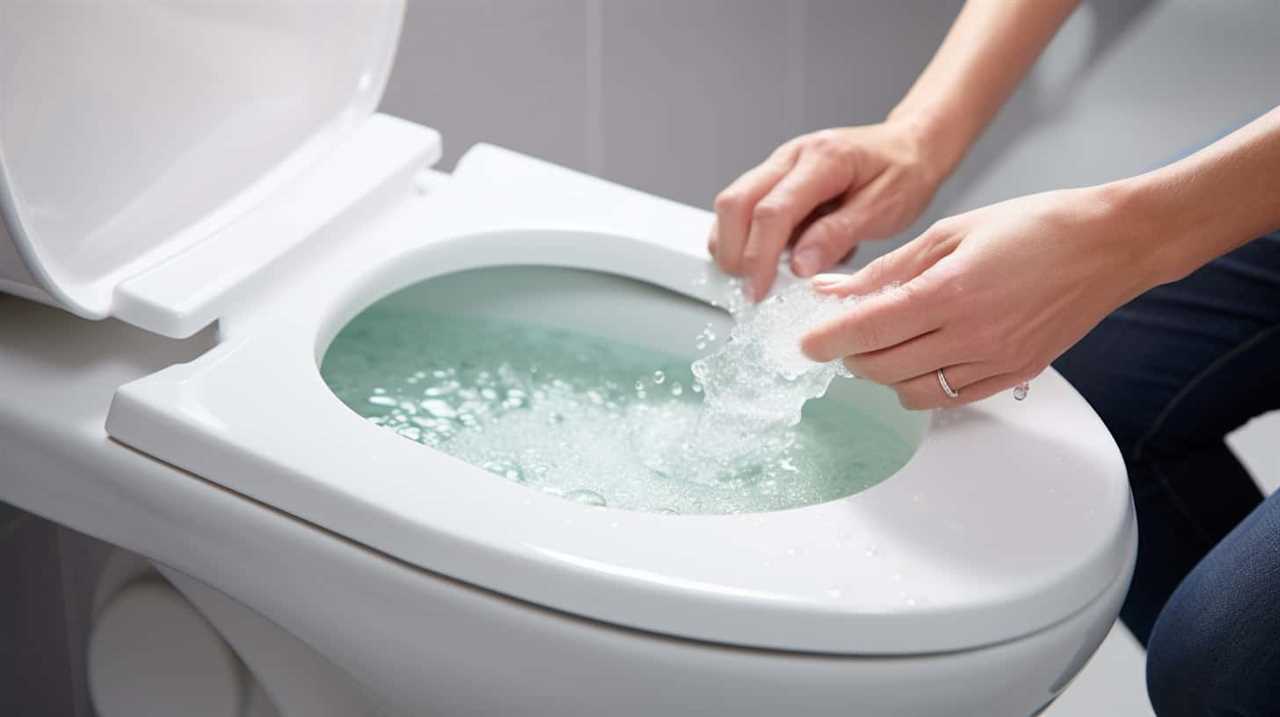
Potential health risks associated with disinfecting wipes include skin irritation, respiratory issues, and allergic reactions, especially in individuals with sensitivities or allergies. It’s crucial to use these wipes according to the manufacturer’s instructions and take necessary precautions to minimize exposure to potentially harmful chemicals.
The Risks of Flushing Disinfecting Wipes
To understand the risks of flushing disinfecting wipes, we need to discuss the potential consequences that can arise from improper disposal.
Flushing these wipes down the toilet can have a significant impact on public health and the environment. When wipes are flushed, they can clog pipes and sewer systems, leading to costly repairs and backups. These clogs can also cause wastewater to overflow into rivers, lakes, and oceans, polluting water sources and harming aquatic life.
Additionally, disinfecting wipes are often made from synthetic materials that don’t break down easily, contributing to plastic waste and pollution. Recognizing these risks, many municipalities and wastewater treatment facilities have implemented regulations on wipe disposal, encouraging proper disposal in the trash instead of flushing.

Impact on Plumbing Systems
When it comes to flushing disinfecting wipes, it’s important to consider the impact on plumbing systems. One major concern is the risk of pipe blockage, as these wipes don’t break down easily and can clog pipes over time.
Additionally, there are environmental impact concerns, as flushing wipes can contribute to sewage system backups and potentially harm aquatic ecosystems.
Pipe Blockage Risk
We should be aware of the pipe blockage risk that disinfecting wipes pose to our plumbing systems. When flushed down the toilet, these wipes can accumulate in the pipes and cause clogs. Regular pipe maintenance is crucial to prevent such blockages.
It’s important to understand that our plumbing systems are designed to handle only human waste and toilet paper. Disinfecting wipes, on the other hand, don’t break down easily and can get stuck in the pipes, leading to costly repairs.
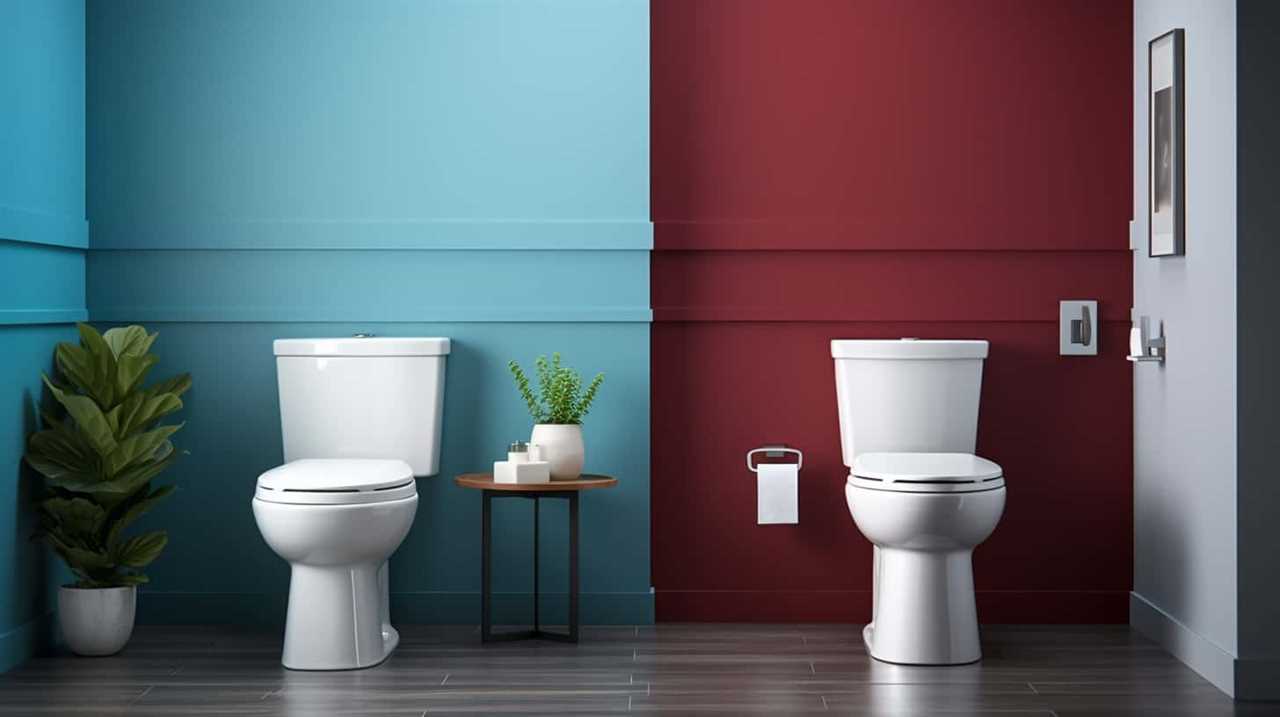
Additionally, these wipes can also pose a risk to wastewater treatment facilities. They can clog the screens and filters at these facilities, leading to disruptions in the treatment process. Therefore, it’s essential to dispose of disinfecting wipes in the trash instead of flushing them to avoid potential pipe blockages and problems in wastewater treatment.
Environmental Impact Concerns
The environmental impact concerns of disinfecting wipes on plumbing systems are significant. When flushed down the toilet, these wipes can cause pipe blockages, leading to costly repairs and inconvenience. However, the impact on plumbing systems goes beyond just blockages.
Here are some key concerns:
- Water Contamination:
- Disinfecting wipes often contain chemicals that can leach into the water supply when flushed. This contamination poses a risk to human health and aquatic ecosystems.
- The presence of these chemicals in water sources can disrupt the balance of ecosystems and harm marine life.
- Impact on Marine Life:
- When wipes enter water bodies, they can be mistaken for food by marine animals, causing ingestion and entanglement.
- The accumulation of non-biodegradable wipes in oceans and rivers can harm marine life, leading to injury or even death.
Considering these environmental impact concerns, it’s crucial to find alternative ways to dispose of disinfecting wipes properly.
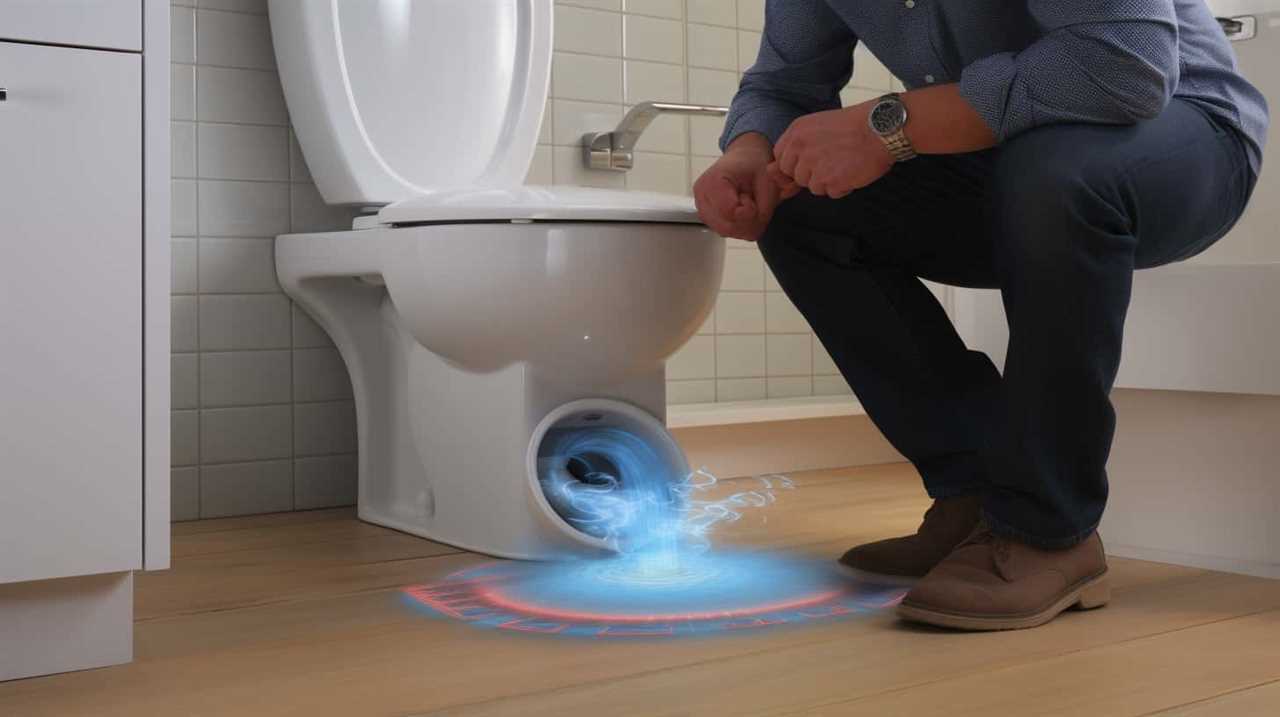
Now, let’s delve into the subsequent section about the environmental consequences of flushing wipes.
Environmental Consequences of Flushing Wipes
When it comes to flushing disinfecting wipes, there are significant environmental consequences that we need to consider.
One of the main issues is water pollution caused by these wipes. They aren’t biodegradable and can clog sewer systems, leading to backups and overflows.
This can result in the release of harmful chemicals and contaminants into our waterways, impacting aquatic life and ecosystems.

Water Pollution From Wipes
Using a significant number of disinfecting wipes, when flushed, can lead to water pollution and have detrimental environmental consequences. The improper disposal of wipes contributes to water contamination, posing a serious threat to marine life and ecosystems.
Here are the key impacts of water pollution from wipes:
- Water Contamination
- Flushing wipes introduces harmful chemicals and microplastics into our waterways, contaminating both surface and groundwater sources.
- These contaminants can persist in the environment for a long time, affecting the quality of our drinking water and harming aquatic organisms.
- Marine Life Impact
- Marine animals can mistake wipes for food, leading to ingestion and choking hazards.
- The presence of microplastics from disintegrated wipes can disrupt the marine food chain, affecting the entire ecosystem.
It is crucial to raise awareness about the environmental consequences of flushing wipes and promote responsible disposal methods to protect our water resources and preserve marine life.
Impact on Sewer Systems
To understand the environmental consequences of flushing wipes, we need to consider their impact on sewer systems. Flushing disinfecting wipes can lead to serious problems in sewer maintenance. These wipes don’t break down easily like toilet paper, causing them to clog pipes and obstruct the flow of wastewater. As a result, sewer systems can become overwhelmed and experience backups and overflows.
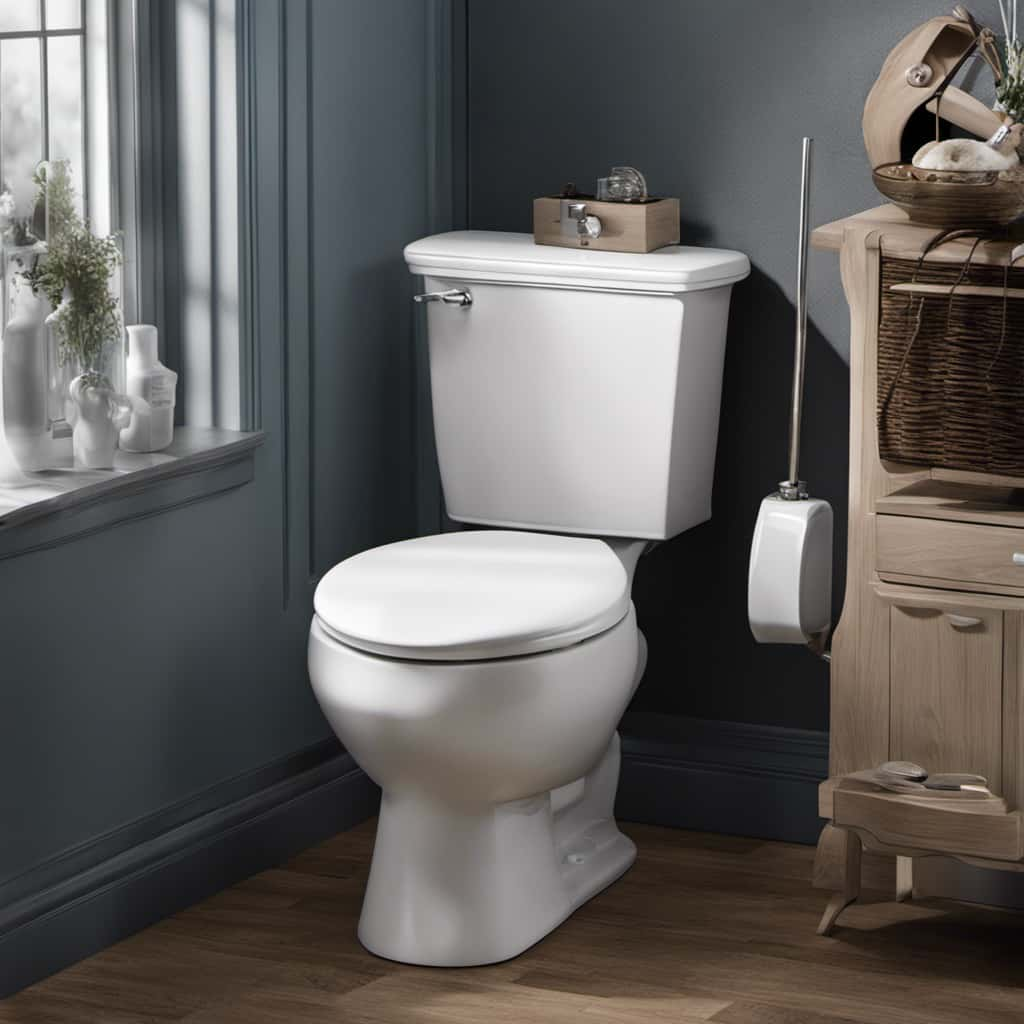
This not only poses public health risks but also leads to costly repairs and maintenance for municipalities. Additionally, the accumulation of wipes in sewer systems can contribute to the formation of fatbergs, which are large masses of congealed fat, wipes, and other debris. These fatbergs can cause blockages and further exacerbate the strain on sewer systems.
It’s crucial to dispose of wipes properly in the trash to prevent these detrimental impacts on our sewer systems and the environment.
Alternatives to Flushing Disinfecting Wipes
As an alternative to flushing disinfecting wipes, we can dispose of them in a designated trash bin. This is a safer and more eco-friendly option that prevents clogs in sewer systems and protects the environment.
To effectively manage and dispose of disinfecting wipes, consider the following:

- Separate bin: Place a separate trash bin in your home specifically for used disinfecting wipes. This will ensure proper containment and easy disposal.
- Sealable bag: Use a sealable bag to store the used wipes before throwing them in the trash bin. This helps to contain any potential germs and odors.
- Regular disposal: Empty the trash bin regularly to prevent any build-up of used disinfecting wipes.
- Eco-friendly options: Consider using reusable cloth wipes or biodegradable wipes as alternative options. These options are more sustainable and reduce waste.
Proper Disposal Methods for Disinfecting Wipes
We can continue the discussion by incorporating the proper disposal methods for disinfecting wipes, ensuring their safe and environmentally friendly management.
It’s important to understand the risks and environmental consequences associated with improper disposal of these wipes. Disinfecting wipes should never be flushed down the toilet, as they can cause blockages in the sewage system and harm the environment.
Instead, they should be placed in a sealed plastic bag and thrown in the trash. Some wipes may also be labeled as safe for composting, in which case they can be added to a compost bin or pile.
It’s crucial to follow these disposal methods to prevent damage to plumbing systems, protect the environment, and maintain proper waste management practices.

The Importance of Reading Product Labels
Product labels play a crucial role in informing us about the proper usage and disposal of disinfecting wipes. When it comes to the importance of product safety and potential health risks, reading product labels becomes even more essential. Here are two reasons why:
- Understanding proper usage: Product labels provide detailed instructions on how to safely and effectively use disinfecting wipes. They outline the recommended surfaces, contact time, and precautions to take. By following these instructions, you can ensure that you’re using the wipes correctly and maximizing their effectiveness.
- Identifying potential health risks: Product labels also include important information about any potential health risks associated with the use of disinfecting wipes. This may include warnings about allergic reactions, skin irritation, or harmful chemical ingredients. By reading the labels, you can make informed decisions about whether a particular product is suitable for you or if you need to take additional precautions.
Common Misconceptions About Flushing Wipes
Many people have misconceptions about flushing wipes, which can lead to environmental and plumbing issues.
One common misconception is that all wipes are safe to flush, when in fact, most wipes aren’t designed to break down in the sewage system.
This can result in clogged pipes and damage to sewage infrastructure.

Environmental Impact of Wipes
Our research has revealed several misconceptions about the environmental impact of flushing wipes. It’s important to understand the breakdown of wipes and their impact on marine life.
- Wipe breakdown: Contrary to popular belief, most wipes don’t break down easily. They’re often made of synthetic materials like polyester or polypropylene, which take a long time to decompose.
- Impact on marine life: Flushed wipes can end up in oceans and waterways, posing a significant threat to marine life. Marine animals can mistake them for food, leading to ingestion and potential harm.
Understanding these misconceptions is crucial in addressing the environmental impact of flushing wipes.
Now, let’s delve into the subsequent section about plumbing and sewage issues.
Plumbing and Sewage Issues
As we explore the topic of plumbing and sewage issues related to flushing wipes, it’s important to address some common misconceptions surrounding this practice.

One common misconception is that flushing wipes down the toilet won’t cause any plumbing issues. However, this isn’t true. Flushing wipes can lead to clogged pipes and drains, resulting in costly plumbing repairs.
Another misconception is that wipes will break down in the sewage system. In reality, most wipes are made from non-biodegradable materials that don’t break down easily. This can lead to blockages in the sewage system, causing backups and overflows.
To avoid these problems, it’s crucial to follow proper plumbing maintenance practices and refrain from flushing wipes. Regular maintenance and inspection of your sewage system can help prevent any potential issues and ensure its proper functioning.
Municipal Sewage Treatment and Disinfecting Wipes
Flushing disinfecting wipes can pose challenges for municipal sewage treatment facilities. These facilities are designed to handle human waste and biodegradable materials, not non-biodegradable products like wipes. Here are some reasons why disinfecting wipes can cause issues:
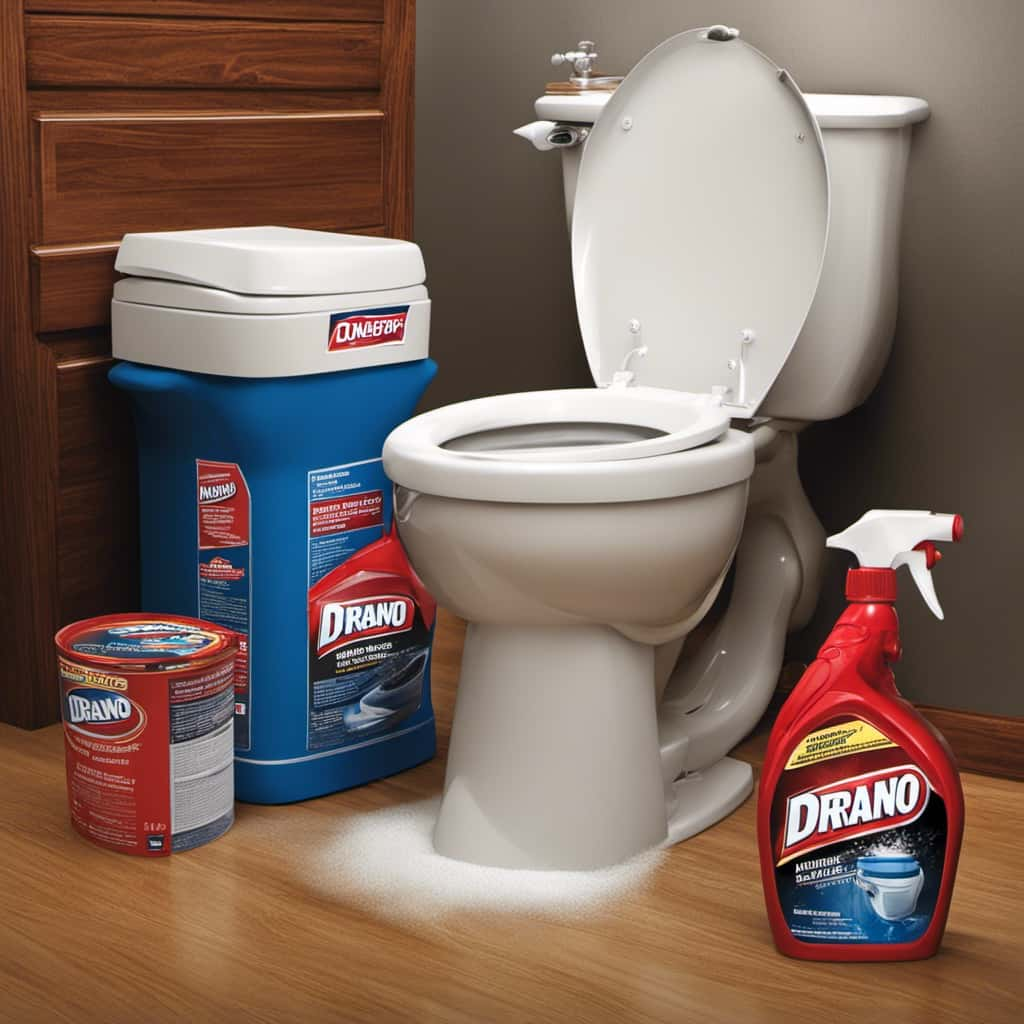
- Clogging: Disinfecting wipes don’t break down easily in water and can clog pipes and pumps in sewage systems, leading to backups and overflows.
- Equipment damage: The strong fibers of disinfecting wipes can cause damage to the machinery used in sewage treatment plants, resulting in costly repairs and maintenance.
To address these challenges, proper wipe disposal education is crucial. Municipalities can educate the public on the proper way to dispose of disinfecting wipes, such as throwing them in the trash instead of flushing them.
Additionally, investing in advanced filtration systems and upgrading infrastructure can help sewage treatment facilities better handle the influx of non-biodegradable waste.
Consumer Responsibility in Disposal Practices
To continue addressing the challenges posed by disinfecting wipes in sewage treatment facilities, it’s crucial for us as consumers to take responsibility in our disposal practices.
Consumer education plays a vital role in ensuring proper disposal of these wipes. Many consumers are unaware of the potential harm caused by flushing wipes down the toilet.

Government regulations can help in raising awareness about the issue and enforcing proper disposal practices. By providing clear guidelines on how to dispose of disinfecting wipes, the government can help minimize the negative impact on sewage treatment facilities.
As responsible consumers, it’s our duty to stay informed about the proper disposal methods and follow them diligently. Taking these measures will contribute to the overall well-being of our sewage systems and protect the environment.
Now, let’s transition into the next section, which focuses on educating others about proper wipe disposal.
Educating Others About Proper Wipe Disposal
To effectively address the issue of proper wipe disposal, we need to educate others about the importance of disposing of disinfecting wipes in a responsible manner. Here are some key points to consider when educating others about proper wipe disposal:
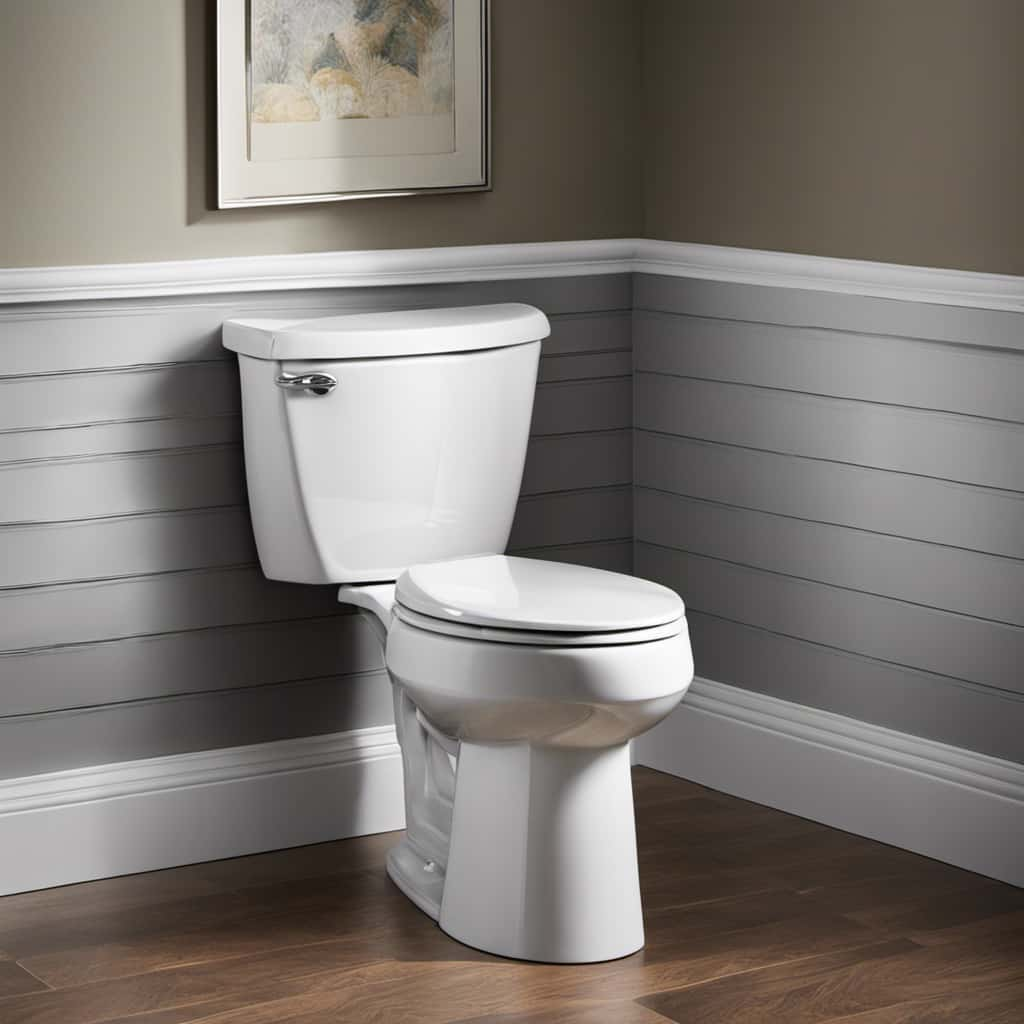
- Raise awareness: Spread the word about proper wipe disposal through social media campaigns, educational materials, and community outreach programs. Share informative posts on social media platforms to reach a wider audience. Distribute pamphlets and brochures that highlight the importance of responsible waste management.
- Provide clear guidelines: Offer step-by-step instructions on how to dispose of disinfecting wipes correctly. Emphasize the need to throw used wipes in the trash instead of flushing them down the toilet. Encourage individuals to seal used wipes in a bag before disposing of them to prevent contamination.
By educating others about proper wipe disposal and responsible waste management, we can minimize the negative environmental impact and ensure a cleaner, healthier future for all.
Now, let’s move on to the conclusion: making informed choices in wipe disposal.
Conclusion: Making Informed Choices in Wipe Disposal
To wrap up our discussion on proper wipe disposal, let’s now delve into the importance of making informed choices.
As consumers, it’s our responsibility to be aware of the potential environmental impact of our actions and make decisions that align with sustainable practices.

When it comes to disposing of disinfecting wipes, it’s crucial to consider the impact on wastewater treatment systems and the environment.
While some wipes are labeled as flushable, it’s generally recommended to dispose of wipes in the trash instead.
By doing so, we can help prevent clogs in plumbing systems and reduce the risk of contamination in waterways.
Ultimately, making informed choices in wipe disposal contributes to our collective responsibility in protecting the environment and maintaining the functionality of our infrastructure.

Conclusion
In conclusion, it’s important to make informed choices when it comes to the disposal of disinfecting wipes. Flushing them may seem convenient, but it poses risks to plumbing systems and the environment.
Instead, consider using alternative disposal methods, such as throwing them in the trash. By educating ourselves and others about proper wipe disposal, we can help protect our infrastructure and preserve the environment for future generations.
Let’s be responsible in our actions and make a positive impact.




